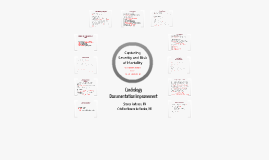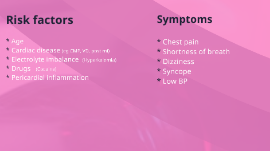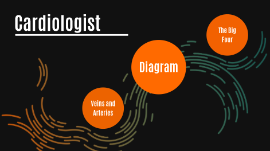Cardiology Case Presentation
Transcript: Treatment Plan An effective treatment plan is crucial in managing cardiac conditions. It encompasses initial strategies, medication regimens, possible surgical interventions, and necessary follow-up care. Diagnostic Tests Conducted The patient underwent a series of diagnostic tests, including an ECG, echocardiogram, and stress testing. These tests are vital in evaluating heart function and guiding treatment decisions effectively. Follow-up Care Initial Treatment Strategies Follow-up care is essential to monitor the patient's recovery and effectiveness of the treatment plan. Regular appointments help track progress, adjust medications, and reinforce lifestyle changes for sustainable heart health. The initial treatment strategies for cardiac patients may include lifestyle modifications such as dietary changes, increased physical activity, and smoking cessation. These strategies aim to reduce risk factors and improve overall heart health. Medical History Symptoms and Diagnosis Patient Case Study Presenting symptoms include chest pain, shortness of breath, and fatigue. Based on these indicators, a diagnosis of unstable angina was established, showcasing the critical nature of symptom assessment in cardiology. The patient has a history of myocardial infarction five years prior and underwent angioplasty. A review of previous treatments emphasizes the necessity of ongoing monitoring and adherence to prescribed medications for cardiovascular health. In this section, we will analyze a detailed case of a patient with cardiac issues, focusing on their background, medical history, symptoms, diagnosis, and the tests undertaken. This case highlights the complexities of cardiac care and the importance of thorough investigation in cardiology. Medications Prescribed Patient Background Common medications prescribed for cardiac patients include beta-blockers, ACE inhibitors, and statins. These medications help manage blood pressure, lower cholesterol levels, and prevent blood clots, essential for reducing cardiovascular risks. The patient is a 65-year-old male with a sedentary lifestyle, presenting with risk factors including hypertension and diabetes. This demographic is significant as age and comorbidities play crucial roles in cardiac health outcomes. Surgical Interventions In some cases, surgical interventions such as angioplasty, stent placement, or bypass surgery may be necessary. These procedures aim to restore blood flow and address structural heart issues effectively. Introduction to Cardiology Objectives of the Presentation Understanding cardiology is essential, as cardiovascular diseases remain a leading cause of morbidity and mortality worldwide. This section outlines key concepts in cardiology, emphasizing the significance of cardiac health and common cardiac diseases. This presentation aims to provide a comprehensive understanding of cardiology, including definitions, disease overview, and the significance of cardiac health. Key findings from a case study will be highlighted to illustrate practical applications. Treatment Efficacy Overview of Cardiac Diseases Definition of Cardiology The treatment efficacy in this case was initially assessed through symptomatic relief and significant improvements in diagnostic metrics. Patients reported a reduction in symptoms such as chest pain and shortness of breath, indicating successful intervention strategies. Outcomes and Follow-up Cardiac diseases encompass various conditions, including coronary artery disease, heart failure, arrhythmias, and valvular heart diseases. These conditions can lead to significant health complications, affecting both quality of life and longevity. Cardiology is the branch of medicine that deals with the functions, disorders, and diseases of the heart and blood vessels. It encompasses a wide range of topics, from diagnosis to treatment and prevention of heart-related diseases. Patient Recovery Journey Importance of Cardiac Health This section examines the treatment efficacy and patient recovery journey, highlighting long-term management strategies and lessons learned to improve future cardiac care. Cardiology Case Presentation Following treatment, the patient demonstrated a progressive recovery, marked by gradual increases in physical activity and improvements in overall well-being. Regular consultations facilitated timely adjustments to the treatment plan, further enhancing recovery outcomes. Cardiac health is crucial, as cardiovascular diseases account for nearly 32% of all global deaths. Lifestyle choices, regular check-ups, and early intervention can dramatically reduce risk factors and improve overall heart health. Lessons Learned Long-term Management Key lessons from this case include the importance of individualized treatment plans and the ongoing education of patients about their conditions. Continuous patient engagement proved essential in improving health outcomes and compliance with treatment. The longitudinal management of the

















